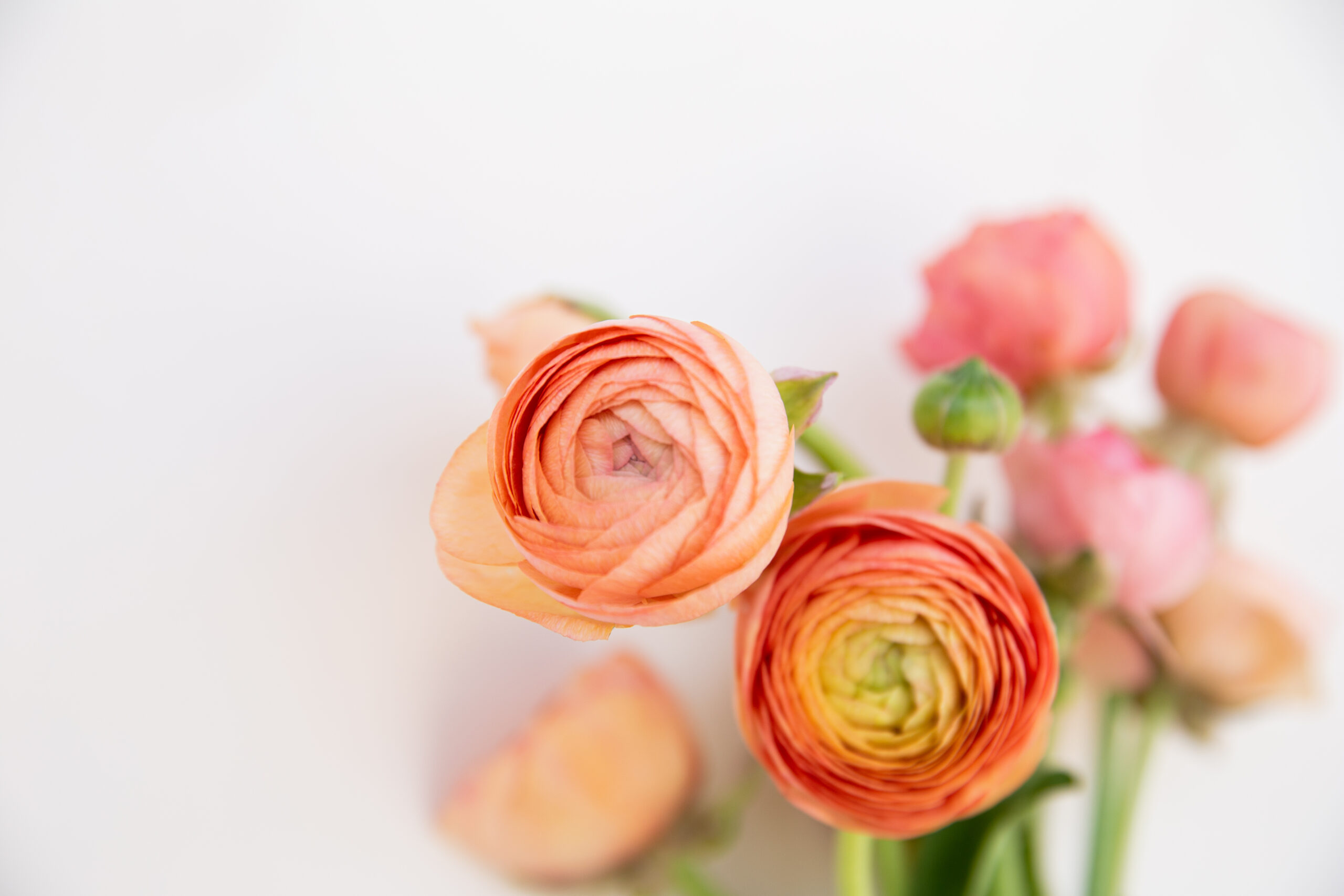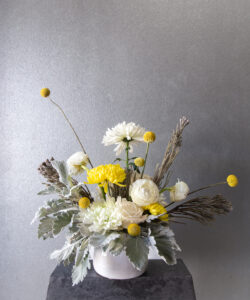FLOWER CARE
There is a whole world of flowers out there and with all of those different blooms come different life cycles and care needs. If you’re ever unsure about how to care for a specific flower, play it safe and research that flowers’ specific needs. As a whole, though, there are some rules to live by to keep your flowers nourished and flourishing.

DRINK UP
Just like us, flower stems need water to keep living, but especially once they’ve been cut! Nearly just as important as having water to drink is keeping that water fresh. About every two days, change out the water to ensure it is fresh and easily drinkable by these buds. Removing the old water and replacing it with new helps to keep bacteria out, as well as naturally removes any foliage that could’ve fallen. That foliage puts your flower’s lives at risk, so be sure to get rid of it as soon as you spot it!
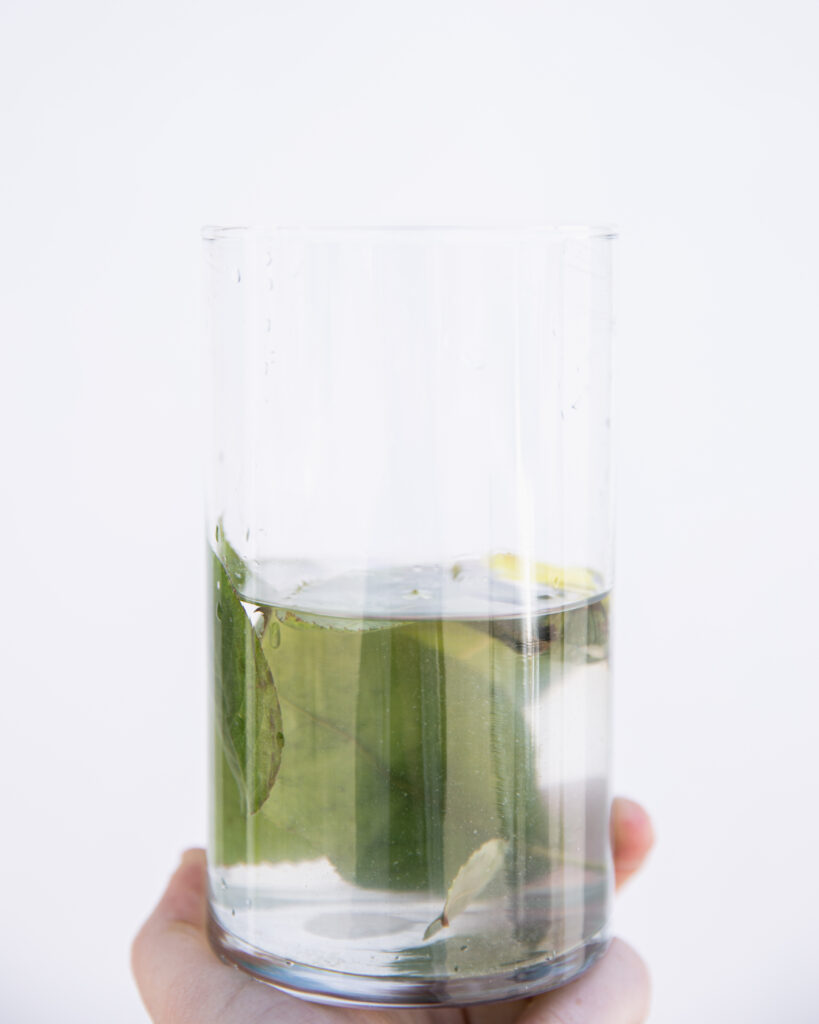
BYE BYE BACTERIA
Bacteria is bad for our budding flower buddies and there’s a couple of ways it likes to sneak in. When the water in the vase is getting old, bacteria starts to grow, trying to take out our beloved flowers. That foliage we mentioned before contributes to a bacteria-haven that we don’t want, so, again, be weary of any fallen material floating in the vases and containers. Some flower food contains something called bactericide that helps fight off bacteria longer, so feed them wisely!
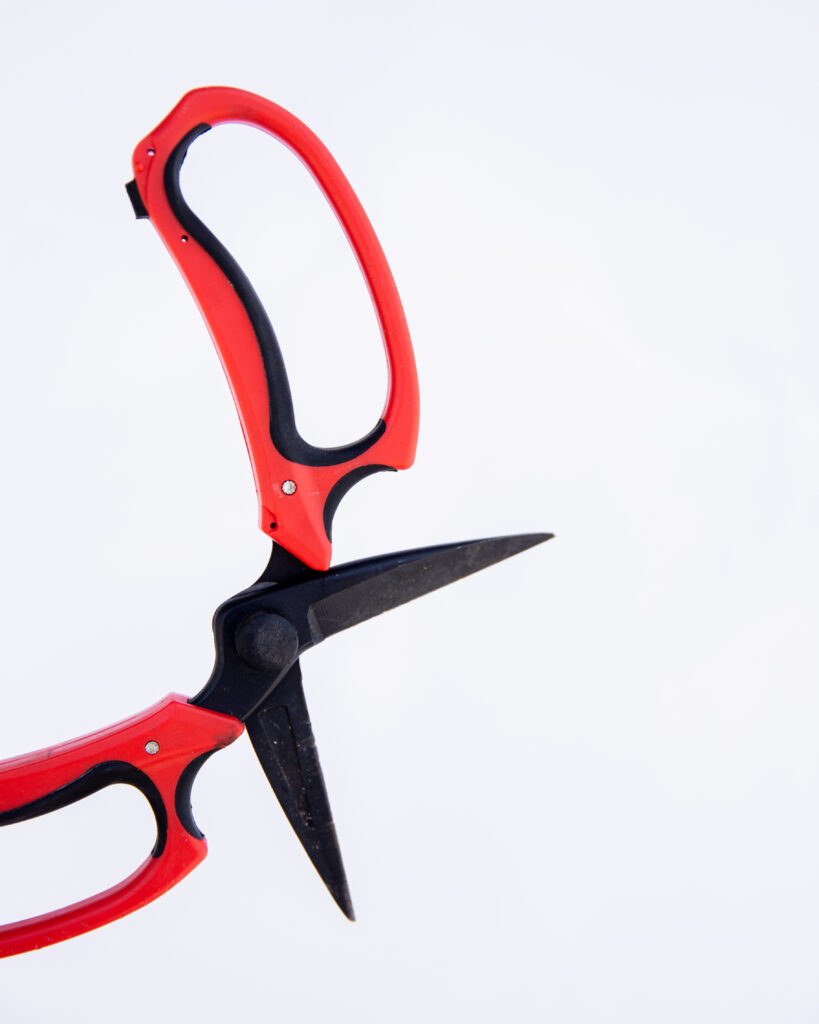
TRIM STEMS
As flowers are being unpackaged and processed into their temporary (buckets) or permanent homes, give the ends a fresh, sharp, snip! Fresh ends make it easier for them to drink, which they desperately need with ease of access. Make sure your tool for cutting is sharp so that it doesn’t crush the base of the stem and prevent the cells from getting the nourishment they need. If the home base for the buds is a vase, cutting the base of the stem at an angle will keep the end of the stem from sitting completely flat at the bottom, thus blocking water flow. If you remove the stems from their current container and into a new vase or arrangement, go ahead and give the ends another snip so they’re wide open and ready to soak up even more fresh water. This process exposes fresh tissue at the base of the stem and allows for a much easier drink. Bottoms up!
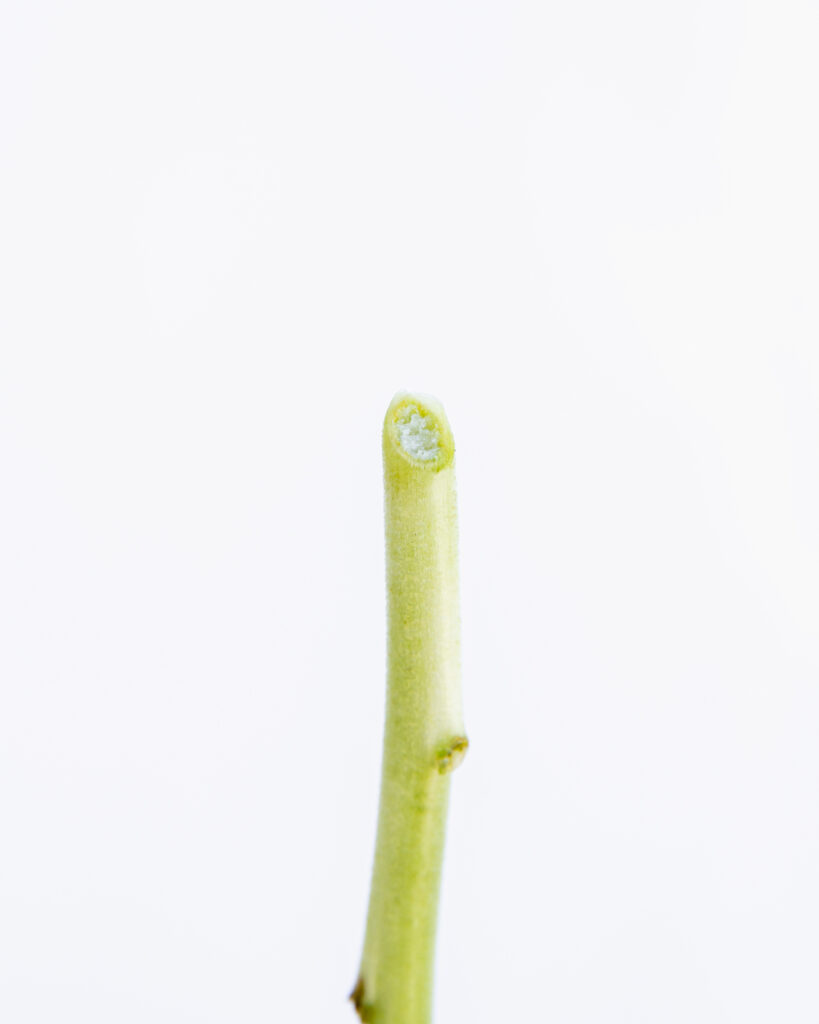
FOOD FOOD FOOD
The type of food and how much food is important. There’s a couple specific brands that we love to use here at Geny’s, but there are several different flower foods on the market. Depending on the scale of your flower operation, choose the food best suited for your buds. There are a few exceptions to this rule, like sunflowers and gladiolas, where they do not like flower food in their water. For the most part, though, feed those flowers to extend the freshness of the water and keep them thriving! Well-fed flowers don’t get hangry.

COLD COLD COLD
Having access to large flower fridges is ideal, however, in the off chance that you don’t have access to one, tweak your environment to best keep the flowers alive and well. Crank the thermostat down to as cold as you can handle, keep them away from sunlight, and make sure you’re on top of changing the water out. Think cold thoughts. (-:
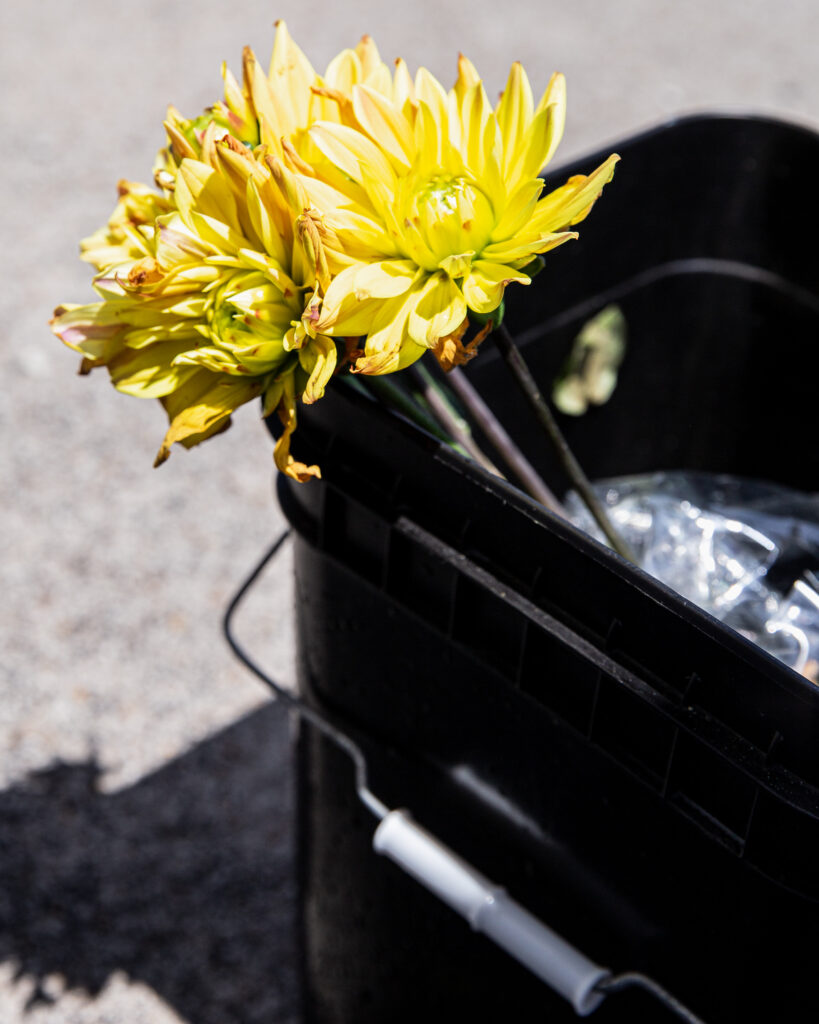
SUN, SUN, GO AWAY
It makes sense that many often think to place their flowers in front of a windowsill, but this is not the case for cut stems. A potted plant is a whole different animal, whereas cut stems are at their prime and the sun then speeds up their growth too much. Cut stems like dark, cold places. Especially in the world of storing-before-arranging, keep the lights low and the temperature cold. Too much heat will cause the petals to wilt and die much quicker (like the photo above…poor guy), so we want to keep the air they’re living and breathing in coooold!
WHAT’S ETHYLENE?
Ethylene is a gas given off by fruits and some vegetables that is nooo good for your flowers. Setting your flowers next to a bowl of fruit could shorten their life. The reason for this is due to the natural life cycle of plants. As flowers bloom and grow, the petals fall when they turn into fruits, so this gas given off by fruits (and tobacco smoke!) encourages the petals to drop so that natural process can carry on.
Keep fruit and smoke f a r f a r a w a y.
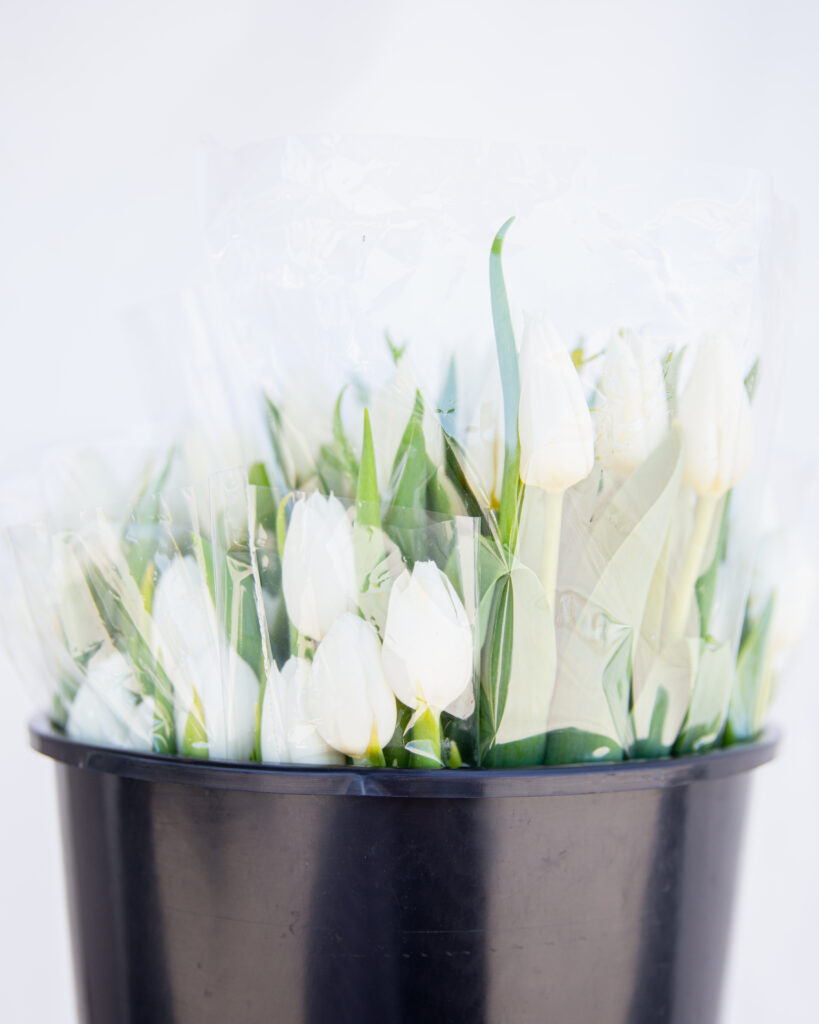
GIVE THEM SPACE
It’s especially important to not overcrowd certain blooms that are prone to drooping, like Cala Lilies and Tulips, but it’s generally important for all buds to have enough space to open up as they’re growing and blooming. Oftentimes flowers within a bundle are at different points in their growth with some buds opening sooner than others, so plenty of space is important to give them room to grow into their fullest selves.
TIP: Keeping certain buds in a funnel can help them from sulking over the edge of the bucket!
There’s so much to learn and we want to provide you with helpful tips, tricks, facts, and fun in the world of flowers. Life and longevity felt like the perfect place to start.
All in all, flowers can seem high maintenance when you’re still getting a hang of their specific needs and desires, but once you learn them and what they like best, it’s just a matter of being proactive so they can flourish from the get-go. It’s trickier to reverse their life trajectory once they’re struggling, so stay on top of it early and watch those beauties B L O O M.
– Lilly Reynolds, Visual Artist


